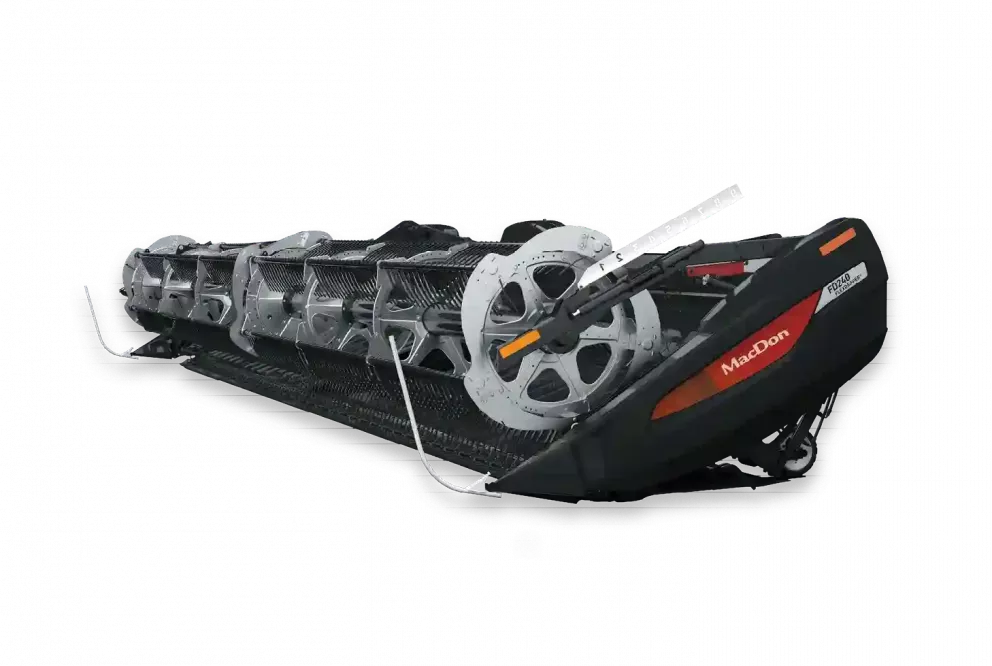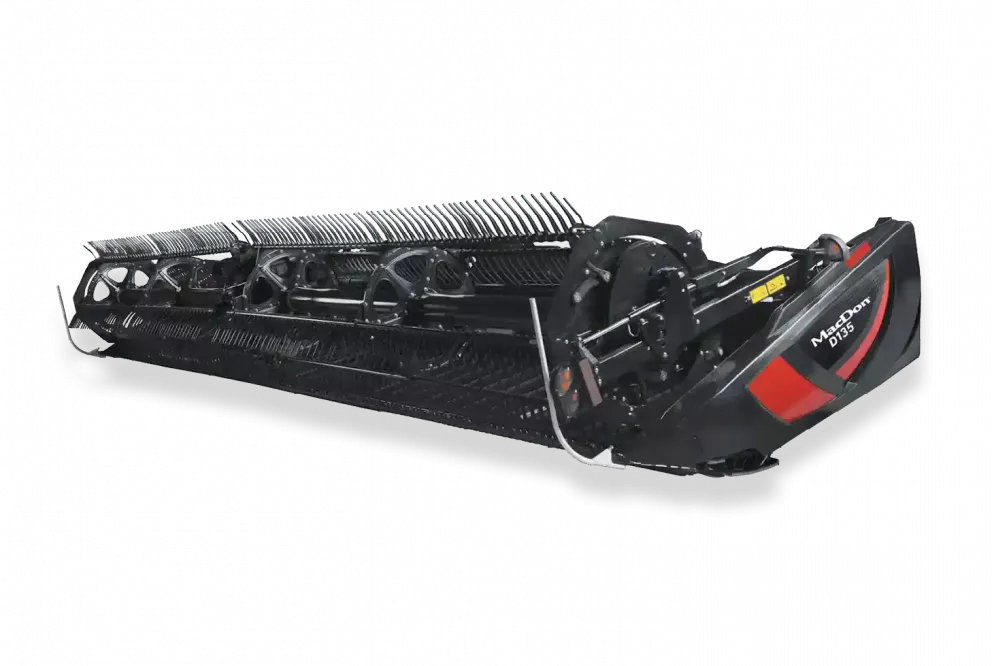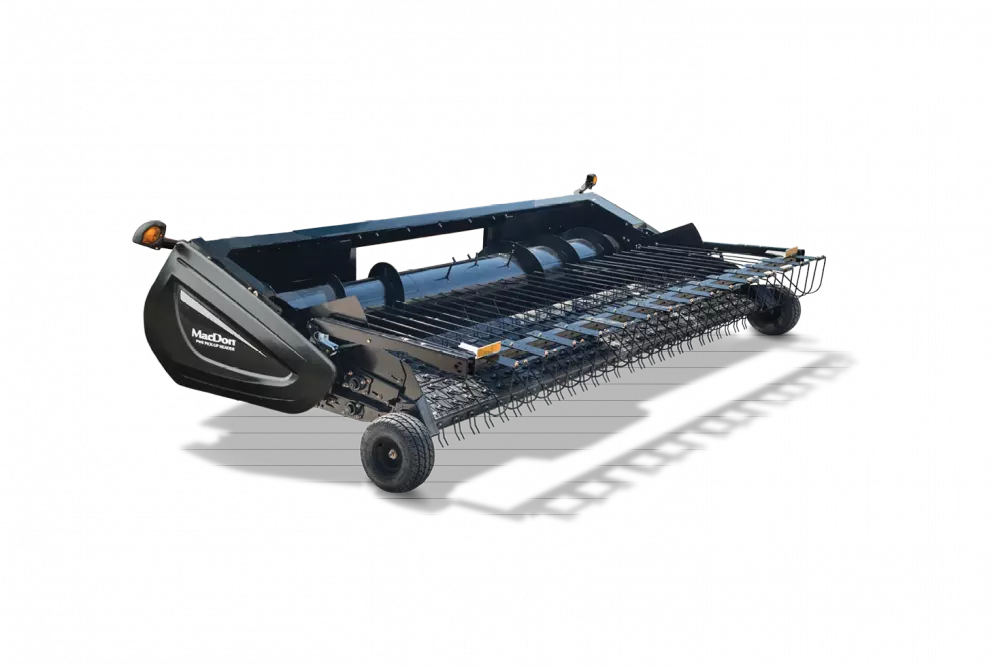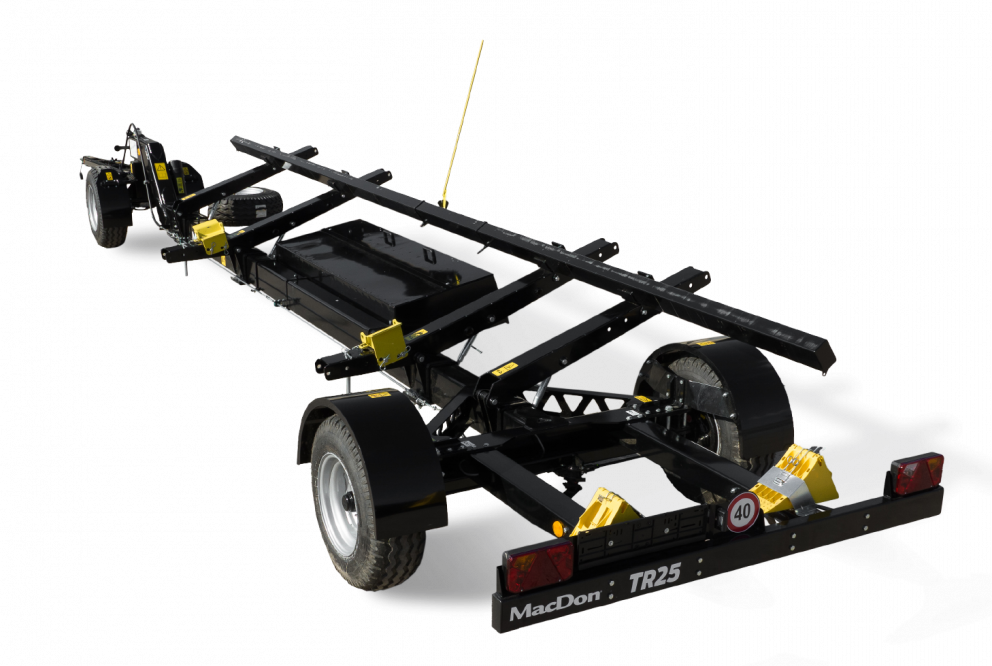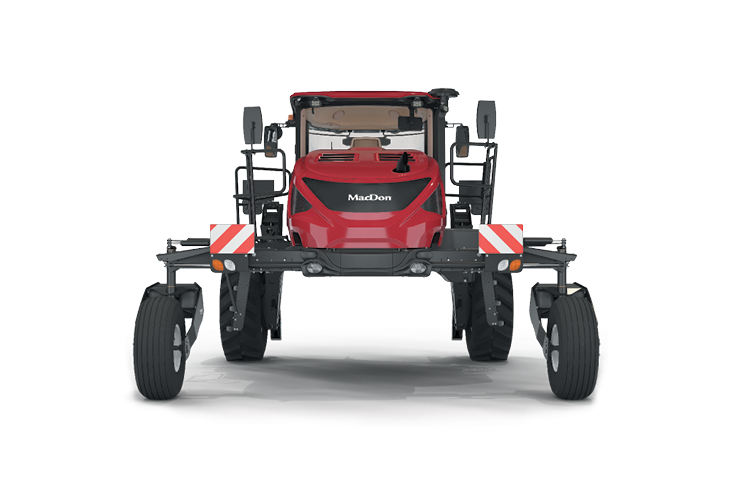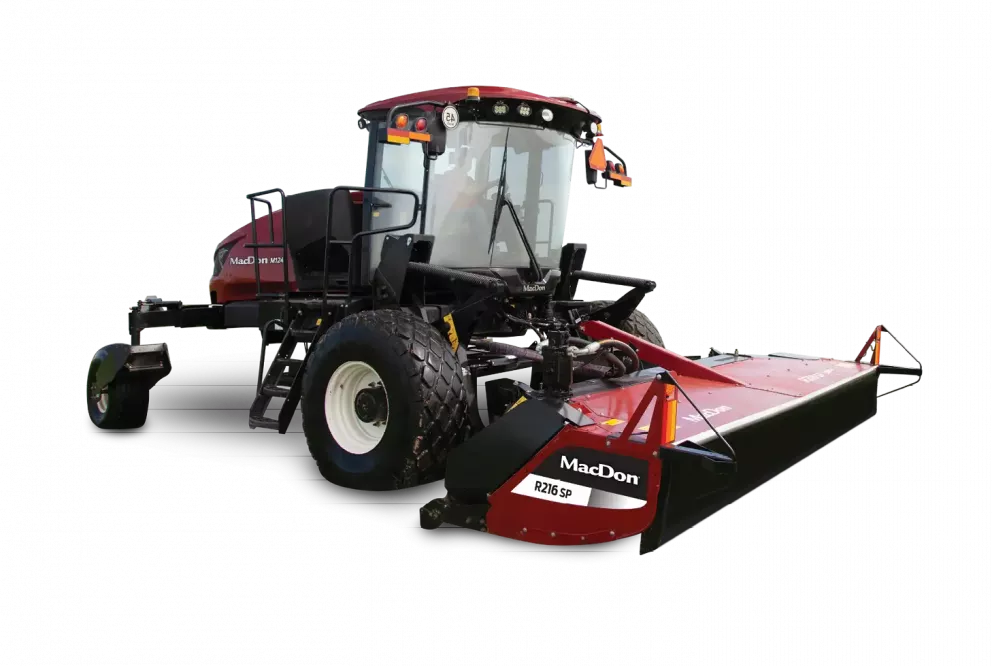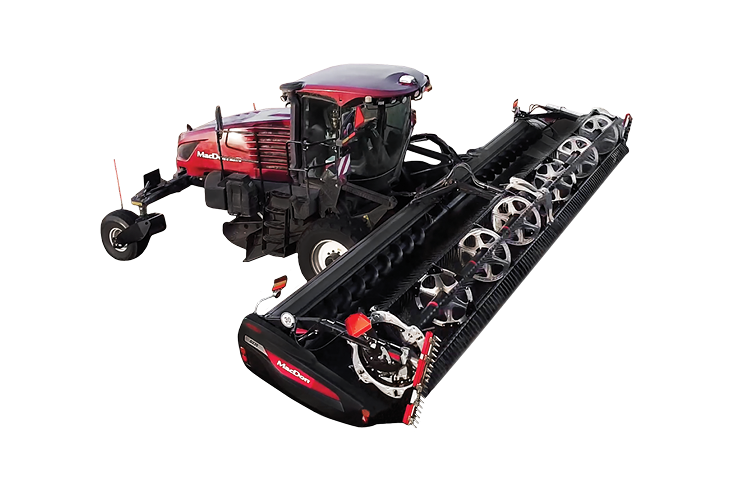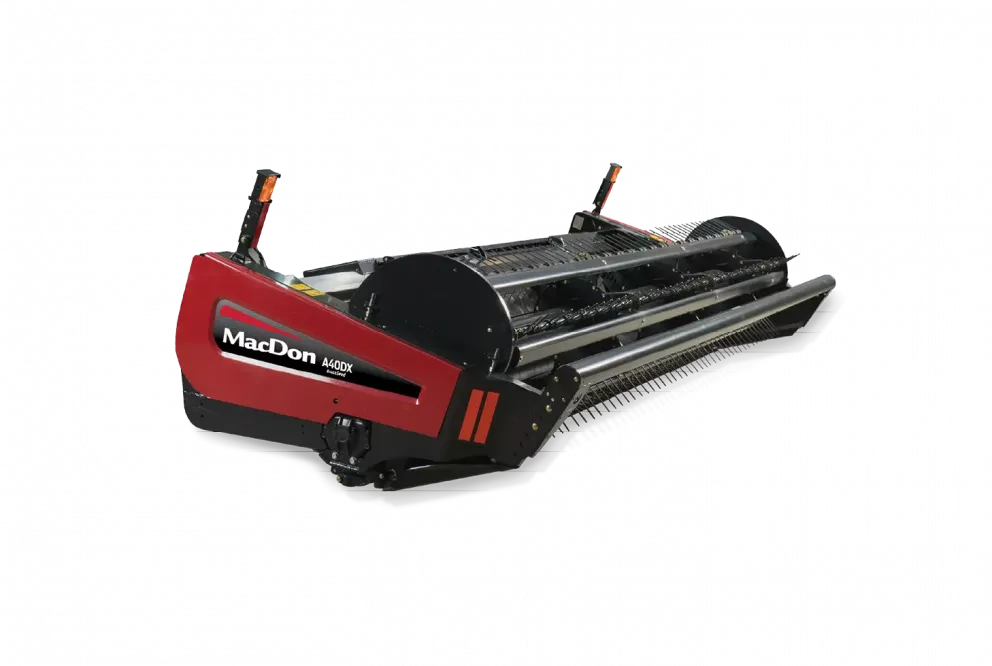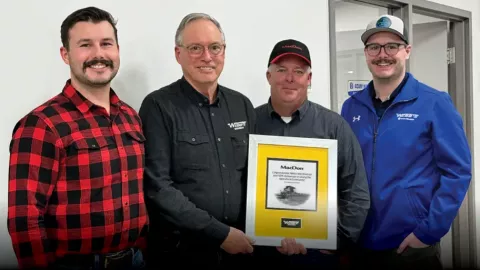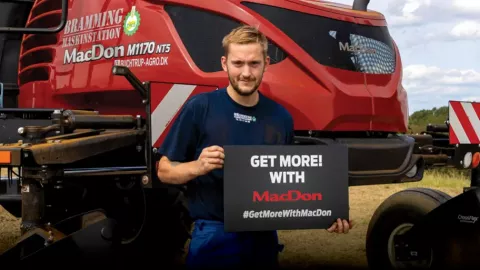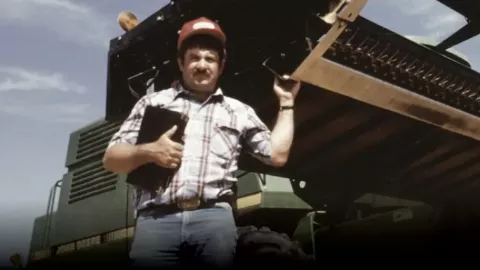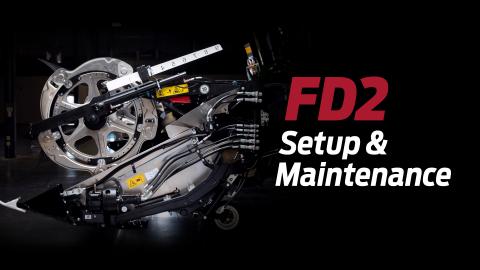Business Partners
LaFollette Enterprises depend on MacDon Windrowers to increase the efficiency of their operation.
With over 1.5 million acres (over 600,000 hectares) under production and almost 9 million tons harvested in 2012 (USDA California Field Crop Review, Oct. 2012), hay is big business in California. It is also highly competitive. According to Randy LaFollette, whose family custom cuts hay and silage near Turlock in California’s San Joaquin Valley, there are numerous operations just like theirs throughout the valley working to meet the feed requirements of California’s dairy industry.
“About 10 years ago we tried to add up the number of forage harvesters just within 10 miles (16.1 km) of our yard and there was over 100,” said LaFollette. “Those people go up and down the valley for work with a radius of operation of about 60 to 100 miles (96.7 to 160.9 km).”
LaFollette says that his family originally started in the dairy business themselves back in the early 1950s when his father and grandfather decided that it was a lot more profitable to focus solely on cutting hay and leave the milking to others. By the time LaFollette and his brother-in-law Robert Tucker took over LaFollette Enterprises in 1985 the cows were already long gone and the custom cutting business was humming along nicely.
“At the time we had one forage harvester, and soon went to two. Now we have six of the largest forage harvesters, plus all of the support equipment.”
Those two little words “support equipment” are LaFollette’s modest way of referring to quite a bit of iron: 36 silage trucks, five pit tractors, four silage baggers as well as several rakes and various other equipment required not only for harvesting hay but also the family’s 140 acres (56.7 hectares) of almonds. As for windrowers, LaFollette Enterprises operates four MacDon M200 Windrowers, a MacDon 9250 Windrower and four older MacDon 9000s, which LaFollette says still see some spot work on occasion. In all, the company employs 25 year-round employees, plus another 60 seasonal employees, making it a pretty big operation by anyone’s standards.
“Almonds are a small part of our business; our main bread and butter is harvesting silage crops,” says LaFollette. “Our radius of operation is about 100 miles (160.9 km) from our main base near Turlock. We have two main seasons; a spring winter forage harvest, a fall corn harvest, and then we have various cuttings of alfalfa throughout the year.”
“In 2012 we cut exactly 16,812 acres (6,803.6 hectares) of custom silage, and the reason I know that is because we charge by the acre. Our customers are concerned about the quality of the cut on the ground, as well as the moisture level. Making silage is very moisture sensitive; if it is too wet or too dry we don’t make good silage.”
LaFollette says that their M200s (which do the majority of their windrowing) switch between using MacDon 16' (4.9 m) R80 Rotary Disc mowers and MacDon 25' (7.6 m) D60 Draper Headers. The R80s are used primarily for cutting the heavier, wetter winter forage crops but when cutting alfalfa, as well as most of their light to medium winter forage, they prefer to use their D60s as the header’s shifting deck allows them to lay two rows of crop together.
“It’s a big advantage for us being able to put 50' (15.2 m) of crop into a single windrow without raking, as it makes our whole business more efficient. Not only does it let us give our choppers all they want capacity wise, but we do not have to run the rake, the tractor or the man. We’re saving on fuel, labor and wear and tear on the machinery.”
LaFollette confirms that thanks to MacDon’s Double Windrow Attachment, they are also able to lay double – and sometimes triple – windrows with their R80 Rotary Disc Headers when harvesting winter forage. Here it is a balancing act between placing enough material in the windrow to maximize the efficiency of their choppers, but not so much that the moisture content gets too high.
Another thing LaFollette appreciates about their MacDon windrowers is the consistency and evenness of the windrows that they lay. He says an even windrow both makes it easier to manage the dry down time and is better for the performance of their forage harvesters.
“If you have a windrow with lumps and bumps because the windrower is always plugging up, it’s hard to get the feed to dry consistently. Also, uneven windrows are hard on the forage harvester because, like any piece of equipment, it wants an even intake of feed. If it has big piles, or big plugs, you tend to break more things. The operator also has to slow down – the truck too.”
And, of course, keeping your speed up is the name of the game when you are a custom cutter trying to maximize the number of acres you can cut in a day. That’s where LaFollette says his MacDon D60 Draper Headers really shine.
“These headers let us drive faster and do as clean a job – or cleaner – as we did with our older equipment. Even in lighter crops they do a better job. When you can go over 8 MPH (12.9 km/h) with a sickle head and cut clean, that’s pretty amazing. In the summertime when the conditions are good we can do 250 to 300 acres (101.2 to 121.4 hectares) a day with just two windrowers. For custom cutters like us that is a huge advantage.”
LaFollette says that they also benefit from the M200’s Dual Direction® feature, which allows the operator to rotate the seat in the cab 180˚ and drive down the highway with the caster wheels in the front. The result is significantly increased stability and speed (up to 23 MPH/37 km/h) on the highway.
“Our average distance is probably 30 to 40 miles (48.3 to 64.4 km) so we are roading these machines a lot. That extra road speed is a huge advantage over what we had before. Another thing that has been huge for us is the ease of attaching and detaching the head. When we are travelling from field to field we are attaching and detaching a header sometimes three or four times a day. With these M200s we can have the header off and sitting on the trailer in under 10 minutes; the same when putting it back on.”
LaFollette reports that the speed gains they are experiencing in the field and moving from field to field have had a direct impact on their company’s overall efficiency, performance and profitability.
“With the M200s we are able to do a lot more work with fewer machines and fewer people. For example, where we once might have needed three or four windrowers for a job, we can now do that same job with just one or two. That’s important, especially with these larger capacity choppers where you need to cover a lot of ground quickly to stay ahead of them.”
“And the durability of these windrowers is unbelievable. As far as maintenance everything is fairly simple. One of the things that has always impressed me about MacDon, even going back to our older 9000 Series Windrowers, is their simplicity of design and ease of maintenance. When you take a MacDon head and place it next to the competition’s head it seems that the MacDon head has half as many moving parts. Fewer parts means less maintenance in the long run, and fewer things to break down and repair. That’s one of the big reasons we’re still running MacDon.”
And when things do go wrong, LaFollette says he has been more than happy with the support he has received from both MacDon and his dealer.
“No machine is without its problems, no matter how good it is. That’s why factory and dealer support is so important for a business like ours where timing is critical. Overall, we’ve been very pleased with our local dealer and with MacDon’s factory support too. Our experience is that MacDon will go out of their way to make sure we stay up and running. We like how MacDon listens to our suggestions, problems and issues.”
“We need a good partnership with our dealer and the factory. If we cannot get parts and service, I don’t care how good the equipment is we might as well buy something else, because eventually we will need parts and service.”
